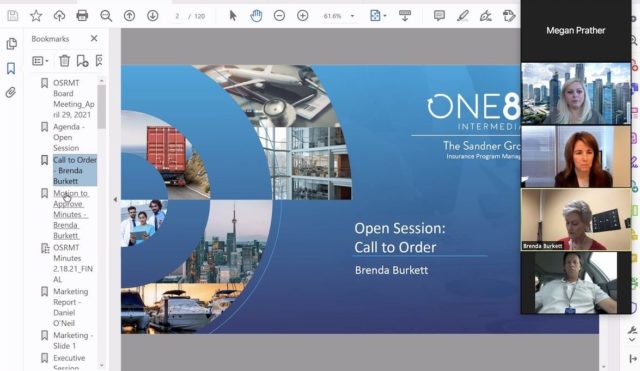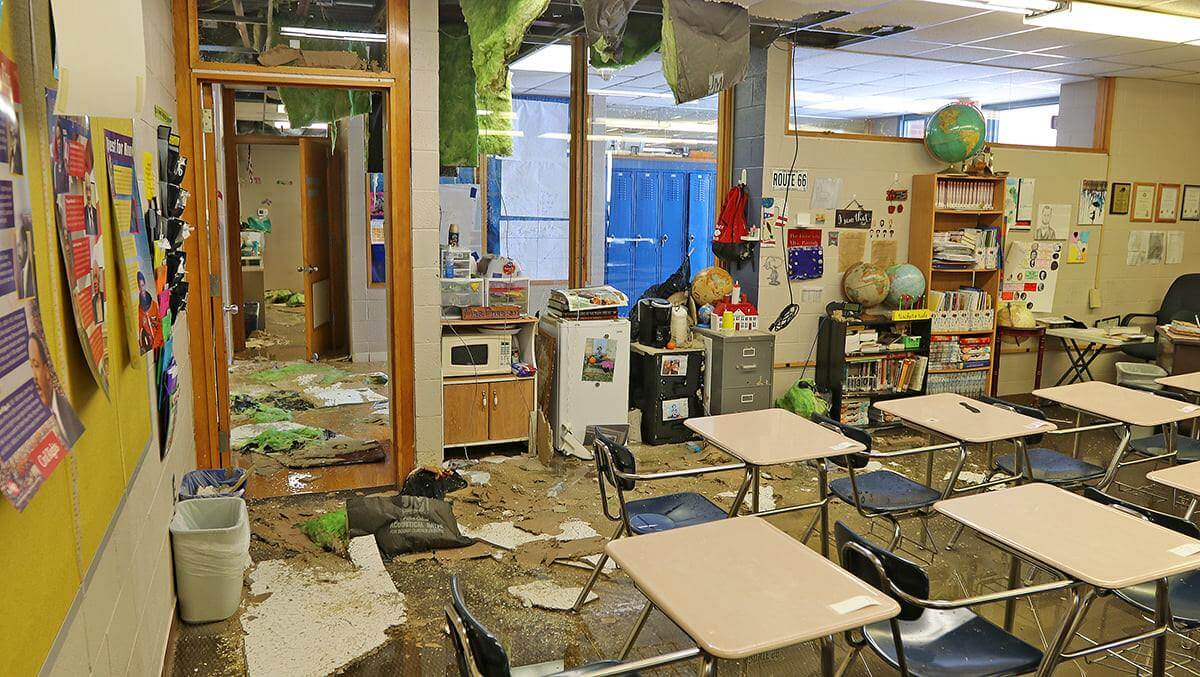

The Oklahoma Schools Risk Management Trust, a self-insurance pool that has provided property and casualty insurance for Oklahoma public school districts since 2009, will be going out of business July 1 owing to financial difficulties and a lack of membership school districts.
In addition, OSRMT’s currently participating school districts will receive invoices for a reserve capital contribution in the amount of 42 percent of their 2020-2021 plan contributions in order to cover existing obligations of the program.
“OSRMT will still operate after July 1 because it will still have claim obligations to pay, but it will no longer provide coverage after July 1,” Oklahoma Schools Risk Management Trust program manager James Woodard told NonDoc. “Anything that happens after 12:01 a.m. on July 1 will be covered by some other insurance provider or risk management apparatus like [Oklahoma Schools Insurance Group].”
OSRMT has faced financial difficulties owing to rising property reinsurance rates and a loss of membership in recent years. OSRMT’s absence will leave the Oklahoma Schools Insurance Group (OSIG) as districts’ only group option for property and casualty insurance in the state. School districts can also choose a self-insurance model.
In March, it was revealed to OSRMT’s then-78 member districts via email that they would receive an additional invoice in the amount of 11 percent of their 2020-2021 plan year contribution (or premium) to make up a $850,000 deficit OSRMT was facing. The email also told districts that the program would require the financial equivalent of 100 member districts for the 2021-2022 school year in order to survive.
The renewal proposals sent to school districts May 14 for the upcoming year reflect the strain the program has felt. Woodard said the proposals that school districts received cost about 48 percent more compared to last year.
“If the district paid $100,000 in 2019-2020, they were going to pay about $148,000 for 2021-2022,” Woodard said. “My promise to the OSRMT members was that whatever we had to charge for the 2021-2022 year, would be enough to make sure that we wouldn’t have to go back again and ask for 11 percent.”
On May 25, Woodard said he sent out an informal poll to district superintendents to determine whether they would give their school boards a recommendation to accept the renewal proposal with OSRMT. Out of the 31 responses Woodard received, 18 superintendents said they would recommend to their boards that the district stay with OSRMT. However, 13 responses stated that the district would not continue doing business with the program.
“We knew that we needed to be at about 77 percent of membership districts to make it work,” Woodard said. “Even if we had renewed the remaining districts that we hadn’t heard from, it wouldn’t be enough to make it go.”
‘It’s a tough spot because we do need competition…’
Superintendent of El Reno Public Schools Craig McVay said the renewal proposal his district received from OSRMT was “awful” and that he would have to recommend that his school board accept the proposal from OSIG. McVay said the positive relationship his district has had with OSRMT over the years made the decision difficult.
El Reno Public Schools has been with OSRMT for more than 10 years and was one of the programs original members.
“It’s really unfortunate because we’ve been with OSRMT since the beginning. It’s really a tough decision,” McVay said. “OSIG’s bid was dramatically different than OSRMT’s bid. But, it’s still a big jump in insurance costs for next year.”
Crescent Public Schools Superintendent Bart Watkins spoke to NonDoc in May and said the renewal quote his district received from OSRMT was higher than previous years and that he would have to wait until he received a bid from OSIG to give his school board a recommendation.
“The initial (quote) I would say was about 85 percent higher,” Watkins said. “We just completed a $10 million bond project, so [our premium cost] was going to go up anyway.”
As one of the only districts in the state to experience earthquake damage, Watkins said Crescent schools have benefited from OSRMT. He said he understands the need for competition in the school insurance marketplace.
“It’s a tough spot because we do need competition to keep from having one company decide the market, but I also understand the idea that Crescent Schools isn’t going to foot the bill just to have a second market,” Watkins said. “That’s kind of the bind that everyone’s in. If it was a question of paying a little more for one or two years and the market stays available, maybe it’s worth it. But the reality is everybody’s got to look at it based on their school, which one’s going to be around, and what’s going to be the best bottom dollar.”
Woodard said OSRMT was proud to have served districts and saved them money over the past decade, but now those districts will have to make the additional 42 percent premium payments as an obligation of being part of a group insurance pool that is folding.
RELATED
Insolvent insurance? Oklahoma Schools Risk Management Trust could dissolve by Megan Prather
“There’s always the potential for claims to continue to be reported that relate back to when OSRMT provided coverage, and OSRMT would be obligated to pay those claims,” Woodard said. “Collecting that money is what’s required for OSRMT, based on the best estimates of the actuaries, to fulfill all of the known claim obligations and also look at what the potential claim obligations are.”
Woodard said there are current claims that could continue to grow and that there could be claims OSRMT doesn’t know about yet. An example of a growing claim obligation OSRMT will have to fulfill comes from the hail storm that hit Norman in April. Woodard said while the claim started out at $400,000, it has since climbed and is now looking to be as much as $33 million.
“Our hope is that we’ve slightly overestimated what those claim obligations would be. You don’t want to underestimate because you can’t go back and do it again,” Woodard said. “You would fulfill those claim obligations over three to seven years, and then any monies left over at the end of that would be returned back to the school districts in a fashion determined to be equitable by the board.”
Follow @NonDocMedia on:
SB 738 aimed at insurance providers
Sen. John Michael Montgomery (R-Lawton) and Rep. Marcus McEntire (R-Duncan) ran a bill this legislative session aimed at school property and casualty insurance providers.
SB 738 will require any entity with an inter-local agreement between two or more school districts, or public agencies, that provides any type of insurance to be subject to examination by the Oklahoma insurance commissioner in a similar manner as other insurance companies. The oversight is contingent on there being “substantial reason to believe” that the entity is insolvent or facing potential insolvency.
The bill was signed into law by Gov. Kevin Stitt on May 5.





















